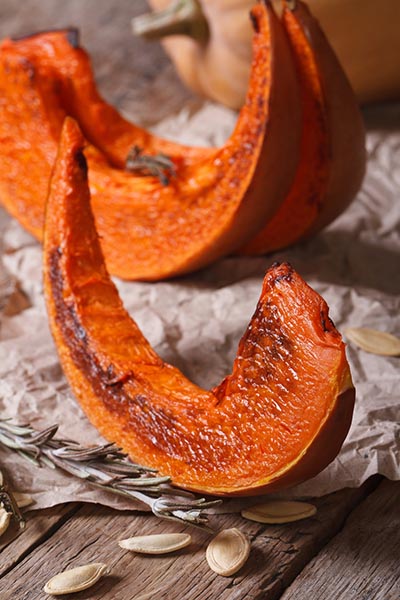It's officially fall. Have you had any pumpkin yet?

It’s that time of year. Pumpkin is making its way into lattes, muffins, and more.
But pumpkin doesn’t appear on plates often enough as, well, just pumpkin.
What kind of nutrients does pumpkin have to offer?
Like most deep-orange veggies, pumpkin is rich in vitamin A from carotenoids. Each half cup of mashed, cooked pumpkin has nearly a day’s worth. And it comes with a decent dose of potassium and fiber...all for only 25 calories.
What to do with fresh pumpkin
Look for sugar pumpkins or pie pumpkins, which are smaller and more flavorful than their jack-o-lantern cousins. Cut off the top and bottom ends, then cut in half. Remove the seeds—you can toast them later—and the pulp. (An ice cream scoop works well.)
Cut the pumpkin into slices, or peel and cut into chunks. Then toss with olive oil and season with ground cumin, coriander, or cinnamon. Roast in an oven at 425ºF until tender and browned in spots, about 25-35 minutes.

Eat the slices like you would slices of cantaloupe. You can serve the chunks as is, or mash like potatoes. Add a handful of chopped toasted walnuts or pecans if you like.
Got leftovers? Turn them into a creamy soup by puréeing with caramelized onions and vegetable stock.
A pumpkin shortcut
If you want to cook with pumpkin when there are none in the store, or you need less than an entire pumpkin, or you just don’t feel like peeling, seeding, chopping, and cooking…there’s an easier way: purée.
The ingredient list: pumpkin. Period.
Grab a carton or can to keep on hand, and try adding the purée to your pasta sauces, curries, yogurt, or oatmeal.
Photos (top to bottom): congerdesign/Pixabay, FomaA/fotolia.com.
More Food Finds
Is a Beyond Burger healthy?
Healthy Eating

High-protein yogurt: Which brands are best?
Healthy Eating

How to make a healthy stir-fry recipe in minutes
Healthy Eating

Why Spindrift's low-sugar seltzers are a find
Healthy Eating

Food Find: Trader Joe's Tofu Sheets


